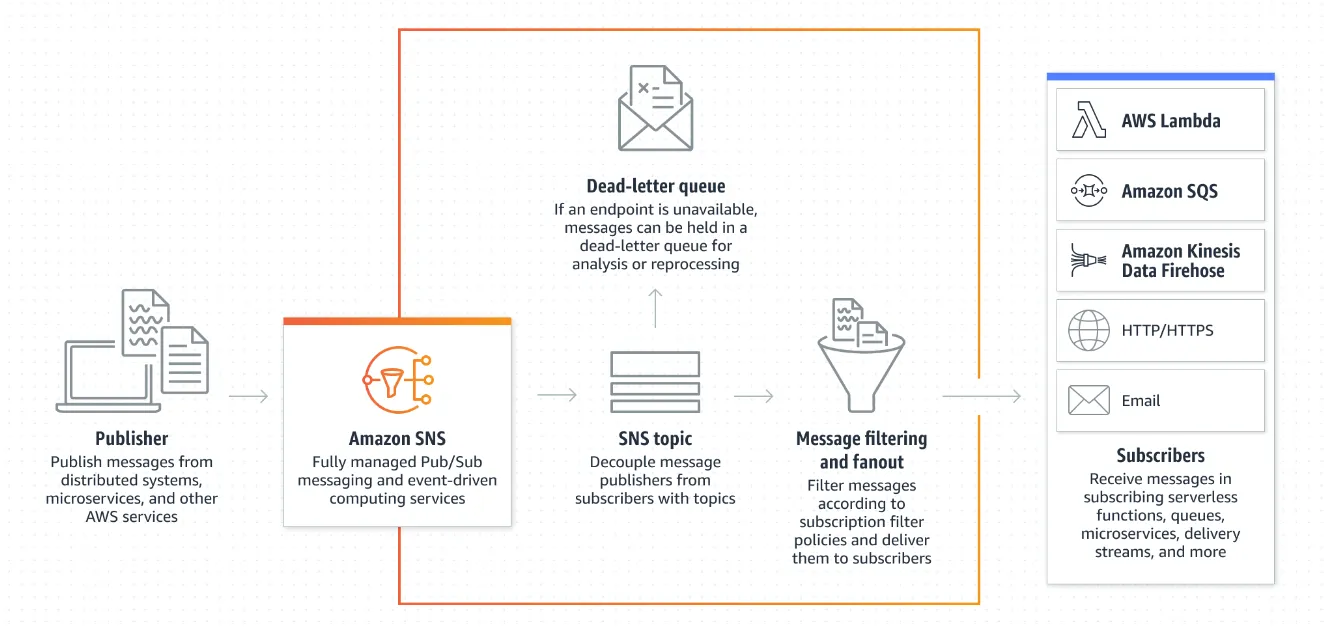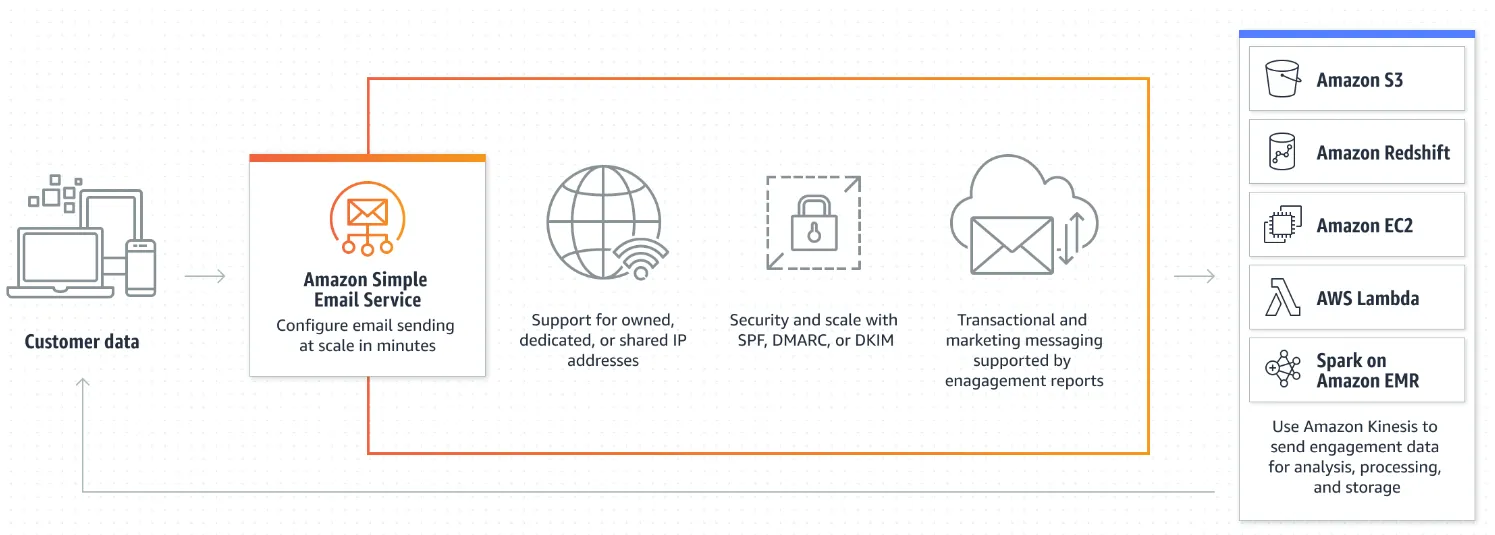SQS vs SNS vs SES
Comparison of Simple services

- Decouple Components for Asynchronous Communication: In distributed systems, components often need to communicate asynchronously to avoid dependencies and bottlenecks. SQS acts as an intermediary, allowing components to send and receive messages independently, enhancing fault tolerance and scalability.
- Buffer and Batch Messages: SQS can act as a buffer, smoothing out traffic spikes and bursts by temporarily storing messages. It also supports batch processing, where multiple messages can be consumed and processed together, improving efficiency for certain workloads.
- Implement Worker Queues for Parallel Processing: SQS can be used to implement worker queues, allowing tasks or jobs to be distributed across multiple workers or consumers in parallel, significantly improving throughput and reducing processing time for compute-intensive or long-running tasks.
- Reliable Message Transmission: SQS provides reliable and durable message delivery, ensuring messages are not lost even in the event of component failures or network outages. Messages are stored redundantly across multiple Availability Zones, providing high availability and fault tolerance.
- Problem: In tightly coupled systems, components directly communicate synchronously, leading to potential cascading failures, inflexibility, and scalability issues.
- Solution: SQS decouples components by introducing an intermediary message queue, enabling asynchronous communication. This enhances fault tolerance, independent scaling, and flexible deployments.
- Reliable messaging and queue management
- Horizontal scalability and high availability
- Integration with other AWS services for building event-driven architectures

- Fanout Messaging and Event Broadcasting: SNS excels at broadcasting messages or events to multiple subscribers simultaneously, a pattern known as fanout messaging. This is useful when the same message needs to be delivered to different systems or components for parallel processing or notification purposes.
- Real-time Notifications and Alerts: SNS is commonly used for delivering real-time notifications and alerts to end-users or administrators, such as appointment reminders, medication alerts, or urgent notifications, ensuring effective communication.
- IoT Device Communication and Telemetry: In the Internet of Things (IoT) domain, SNS plays a crucial role in enabling communication between IoT devices and backend systems. IoT devices can publish messages to SNS topics, which can be consumed by various subscribers for data processing, analytics, or notifications.
- Application Monitoring and Incident Response: SNS can be integrated with monitoring and logging systems to receive alerts and notifications about application health, performance issues, or security incidents, enabling prompt detection and resolution of issues.
- Problem: Managing multiple communication channels and handling subscriptions for different recipients can be complex and resource-intensive.
- Solution: SNS provides a centralized messaging system for publishing and subscribing to events or notifications, simplifying communication across multiple channels and subscribers.
- Reliable and scalable pub/sub messaging
- Support for multiple communication channels
- Integration with other AWS services for event-driven architectures

- Transactional Emails: SES is widely used for sending transactional emails, such as order confirmations, password resets, account activations, or shipping notifications, providing timely and relevant information to users.
- Marketing and Promotional Campaigns: SES can be leveraged for sending marketing and promotional emails, such as newsletters, product updates, special offers, or event invitations, ensuring effective reach to intended recipients.
- Automated Notifications and Alerts: SES can deliver automated notifications and alerts to users or administrators based on specific events or conditions within an application or system, such as system monitoring alerts or important reminders.
- System Monitoring and Incident Reporting: SES can be integrated with monitoring and logging systems to receive email notifications about application health, performance issues, or security incidents, enabling prompt detection and resolution of issues.
- Problem: Setting up and maintaining an email infrastructure for sending transactional, marketing, or notification emails can be complex and resource-intensive, with challenges in ensuring high deliverability rates and managing sender reputation.
- Solution: SES offloads the complexity of email sending by providing a scalable and reliable email service with robust deliverability practices and reputation management techniques.
- Scalable and cost-effective email sending
- High deliverability rates and reputation management
- Integration with other AWS services for automated email workflows
| SQS | SNS | SES | |
|---|---|---|---|
| Purpose | Message Queuing | Pub/Sub Messaging | Email Sending |
| Delivery Model | Pull-based | Push-based | Push-based |
| Communication Channels | N/A | Email, SMS, HTTP/S, Lambda | |
| Guaranteed Delivery | Yes | Yes (for SQS and Lambda) | No |
| Ordering | |||
| Retention Period | Yes | No | N/A |
| Scalability | Automatically Scales | Automatically Scales | Automatically Scales |
| Typical Use Cases | Decoupling, Worker Queues, Batching | Fanout, Notifications, IoT | Transactional, Marketing, Notifications |
| Integration Examples | Lambda, EC2, ECS, Step Functions | Lambda, SQS, Kinesis, IoT Core | SNS, Lambda, S3, CloudWatch |
